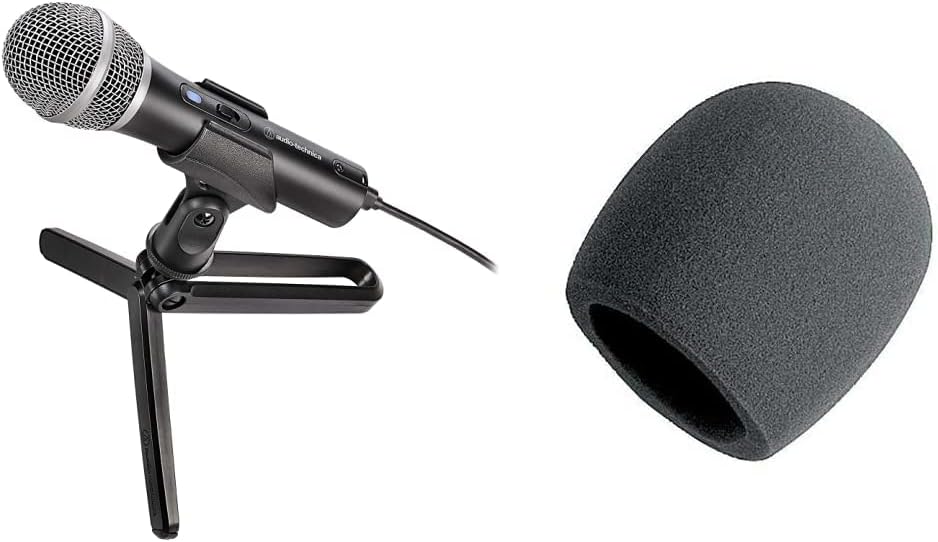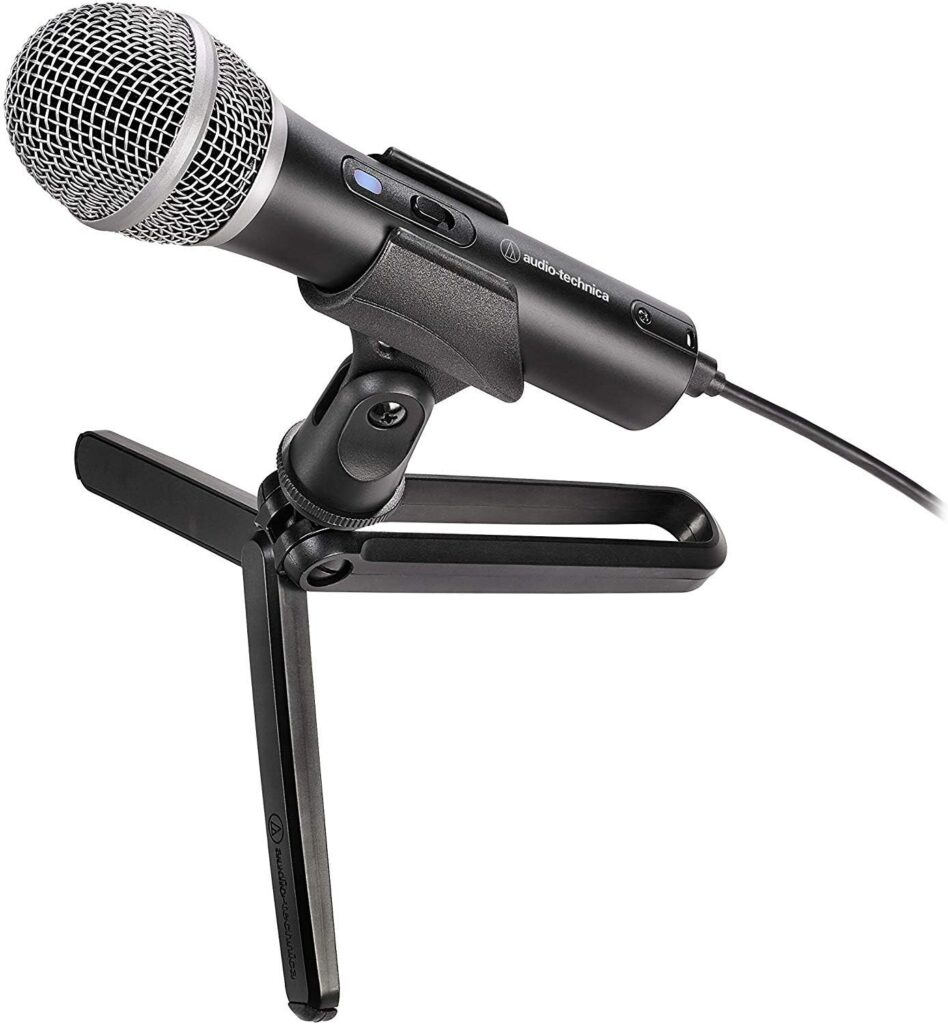Audio-Technica ATR2100x USB Review
When it comes to affordable, versatile microphones tailored for podcasting, streaming, and voiceover work, the Audio-Technica ATR2100x-USB stands out as a perennial favorite among beginners and seasoned creators alike. With its dual USB and XLR connectivity, solid build quality, and impressive sound performance for its price point, this dynamic microphone has earned a reputation as a go-to choice for those looking to step up their audio game without breaking the bank. In this 2000-word review, we’ll dive deep into every aspect of the ATR2100x-USB—its design, features, sound quality, usability, and value proposition—while exploring how it stacks up against competitors and whether it’s still a top contender in 2025.
Audio-Technica ATR2100x-USB Review In 2025
Audio is the backbone of any successful podcast, stream, or voiceover project. While high-end microphones like the Shure SM7B or Rode PodMic deliver exceptional quality, their price tags and required accessories can be daunting for beginners or creators on a budget. Enter the Audio-Technica ATR2100x-USB, a microphone that bridges the gap between affordability and professional-grade performance. Priced around $79-$100 (depending on the retailer), it offers a rare combination of USB plug-and-play simplicity and XLR compatibility, making it a future-proof investment for creators who might want to upgrade their setup later.
The ATR2100x is the successor to the wildly popular ATR2100-USB, which gained a cult following in the podcasting community for its versatility and value. The updated “x” version brings modern enhancements like USB-C connectivity and improved analog-to-digital conversion (up to 24-bit/192 kHz), ensuring it remains relevant in a market increasingly crowded with USB microphone options. But does it live up to the hype? Let’s break it down.
Design and Build Quality
The Audio-Technica ATR2100x-USB is a handheld dynamic microphone with a rugged, utilitarian design that screams durability. Measuring approximately 10 inches long and weighing just over 1.5 pounds, it’s hefty enough to feel substantial but not so heavy that it becomes cumbersome during extended use. The body is constructed from matte-finished metal, giving it a cool-to-the-touch, professional feel that’s a step above plasticky budget mics. The grille, while appearing metallic, has a slightly plastic-like texture, which might detract from the premium vibe for some users—but it’s a minor nitpick at this price.
Aesthetically, the ATR2100x-USB opts for a no-nonsense look: a sleek black finish with a subtle Audio-Technica logo near the base. It’s not flashy, but it doesn’t need to be—this is a tool designed for function over form. The microphone features an on/off switch (which doubles as a mute for the XLR output) prominently placed on the body, illuminated by a blue LED when powered via USB. While the switch feels a tad flimsy and makes a noticeable click when toggled, it’s a small compromise for the convenience it offers.
At the bottom, you’ll find the standout feature: dual connectivity ports. There’s a USB-C port for digital recording directly into a computer or mobile device, an XLR output for analog use with mixers or audio interfaces, and a 3.5mm headphone jack with a volume control dial for zero-latency monitoring. This combination is rare in budget microphones and sets the ATR2100x apart from competitors like the Blue Yeti or Samson Q2U (though the latter also offers dual connectivity).
The microphone comes with a generous accessory package: a foldable tripod desk stand, a stand clamp for 5/8″-27 threaded mounts, two 6.6-foot USB cables (USB-C to USB-C and USB-C to USB-A), and a 9.8-foot XLR cable. This all-in-one approach is a huge plus for beginners who want to start recording without hunting down additional gear. However, the included tripod stand, while functional, is lightweight and prone to wobbling—investing in a sturdier stand or boom arm is recommended for serious use.
Features and Functionality
The ATR2100x-USB is packed with features that make it a versatile workhorse for content creators. Let’s explore the key elements:
- Dual USB/XLR Connectivity
The ability to switch between USB and XLR outputs is the microphone’s defining feature. Out of the box, you can plug it into a computer via USB-C and start recording with minimal setup—no audio interface required. Later, as your skills or budget grow, you can connect it to a mixer or interface via XLR without needing a new microphone. This flexibility is a game-changer for beginners transitioning to more advanced setups. - High-Quality Audio Conversion
The ATR2100x boasts a 24-bit/192 kHz analog-to-digital converter, a significant upgrade from the original ATR2100’s 16-bit/48 kHz spec. While most podcasters won’t need such high resolution (44.1 kHz or 48 kHz is standard for spoken word), it ensures the microphone can capture nuanced audio with excellent fidelity, making it suitable for voiceovers or even basic music recording. - Cardioid Polar Pattern
As a dynamic microphone with a cardioid pickup pattern, the ATR2100x excels at isolating the speaker’s voice while rejecting noise from the sides and rear. This makes it ideal for untreated rooms or noisy environments, where condenser mics like the Blue Yeti might pick up too much ambient sound. - Headphone Monitoring
The built-in 3.5mm headphone jack and volume dial allow for real-time, latency-free monitoring—a critical feature for ensuring proper mic technique and catching issues during recording. Note that the headphone output only works when the mic is connected via USB to a computer, not with XLR alone. - Simple Controls
There’s no onboard gain adjustment, which might disappoint some users—you’ll need to tweak input levels through your recording software or interface. However, the on/off switch provides quick muting in live settings, and the minimalist design keeps the learning curve low.
Sound Quality
The heart of any microphone is its sound, and the ATR2100x-USB delivers impressive performance for its price. As a dynamic microphone, it’s less sensitive than condenser mics, which translates to a tighter focus on the voice and less pickup of room noise or reverb. The frequency response (50 Hz to 15 kHz) is tailored for spoken word, offering a warm, full-bodied tone with crisp highs and a controlled low end.
In testing, the ATR2100x shines when used close to the mouth (about 2-4 inches), producing a rich, broadcast-like quality that rivals mics costing twice as much. Sibilance is well-managed, and plosives (like “p” and “b” sounds) are minimal, though a pop filter or windscreen (sold separately) is recommended for optimal results. Compared to the Blue Yeti, a popular USB condenser mic, the ATR2100x picks up far less background noise, making it a better choice for untreated spaces.
When connected via XLR to a decent preamp or interface (like a Focusrite Scarlett), the sound quality improves further, with greater clarity and dynamic range. This scalability is a huge advantage—unlike purely USB mics, the ATR2100x grows with your setup. However, it’s worth noting that the headphone output can be a weak link; some users report low volume or subpar amplification, so high-impedance headphones might not pair well without an external amp.
Against competitors like the Samson Q2U or Audio-Technica’s own ATR2500x-USB (a condenser model), the ATR2100x holds its own. The Q2U offers similar dual connectivity and a slightly punchier sound, but its build feels less robust. The ATR2500x, while more sensitive and detailed, lacks XLR support and picks up more ambient noise, making the ATR2100x the more practical all-rounder.
Usability and Portability
The ATR2100x-USB is a breeze to use, especially for beginners. Plug it into a USB port, select it as your input device, and you’re recording in seconds—no drivers or software required on modern Windows or macOS systems. The included cables ensure compatibility with a wide range of devices, including laptops, desktops, and even some mobile devices with USB-C adapters.
Its handheld design and lightweight tripod make it portable, though the lack of a carrying case means you’ll need to get creative (packing it in a sock works, as some users suggest!). For podcasters on the go, the ability to toss it in a backpack with a laptop and record high-quality audio anywhere is a major selling point. The tripod is serviceable for desk use, but a boom arm or shock mount (like the Knox Shock Mount) elevates the experience by reducing desk noise and improving positioning.
One quirk: the on/off switch’s LED can be misleading. It lights up when the mic is powered via USB, even if the mic is muted, which might confuse new users. Additionally, adjusting gain through software rather than a physical knob adds a minor step, but it’s a fair trade-off for simplicity.
Value Proposition
At $79-$100, the ATR2100x-USB is a steal. You’re getting a durable, versatile microphone with professional-grade features—dual connectivity, high-resolution audio, and direct monitoring—that competitors often reserve for higher price tiers (e.g., the Shure MV7 at $250+). The inclusion of XLR and USB cables, plus a stand, adds even more value, saving you from immediate accessory purchases.
Compared to the Blue Yeti ($130), which offers multiple polar patterns but is bulkier and less focused on voice isolation, the ATR2100x is a leaner, more targeted option. The Samson Q2U ($60-$70) is a close rival, but its slightly cheaper build and lower audio resolution (16-bit/48 kHz) give the Audio-Technica an edge. For those eyeing premium dynamic mics like the Shure SM58 ($100) or SM7B ($400), the ATR2100x provides 80-90% of the performance at a fraction of the cost, especially when paired with a good interface.
Pros and Cons
Pros:
- Dual USB/XLR connectivity for flexibility and future-proofing
- Excellent sound quality for podcasting and voiceovers
- Cardioid pattern minimizes background noise
- Built-in headphone monitoring with volume control
- Affordable price with generous accessories
- Durable, portable design
Cons:
- No onboard gain control
- Tripod stand feels flimsy
- Headphone output can be weak with some headphones
- On/off switch is noisy and slightly confusing
Who Should Buy the ATR2100x-USB?
This microphone is perfect for:
- Beginner podcasters seeking an affordable, easy-to-use option with room to grow.
- Mobile creators who need a portable, all-in-one solution.
- Budget-conscious streamers or voiceover artists wanting professional sound without a big investment.
- Anyone in noisy environments where a dynamic mic’s noise rejection is key.
It’s less ideal for:
- Music producers needing a condenser mic’s sensitivity for instruments.
- Users with high-impedance headphones who might struggle with the headphone output.
- Professionals requiring top-tier audio for critical applications (e.g., studio-grade voiceovers).
Conclusion
In 2025, the Audio-Technica ATR2100x-USB remains a standout choice in the budget microphone market. Its blend of versatility, sound quality, and affordability keeps it competitive, even as newer models emerge. While it’s not perfect—the lack of gain control and a sturdier stand are notable drawbacks—it punches well above its weight, delivering performance that rivals mics costing far more.
For anyone starting a podcast, streaming setup, or voiceover gig, the ATR2100x-USB offers a low-risk, high-reward entry point. Pair it with a pop filter, a solid stand, and perhaps a basic interface down the line, and you’ve got a setup that can carry you from your first episode to your hundredth. In a world of flashy, overpriced gear, this unassuming mic proves that sometimes, simplicity and substance are all you need.



